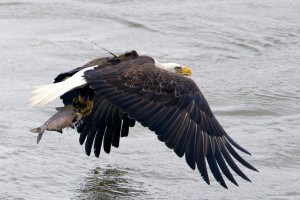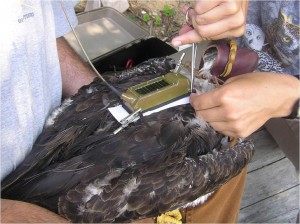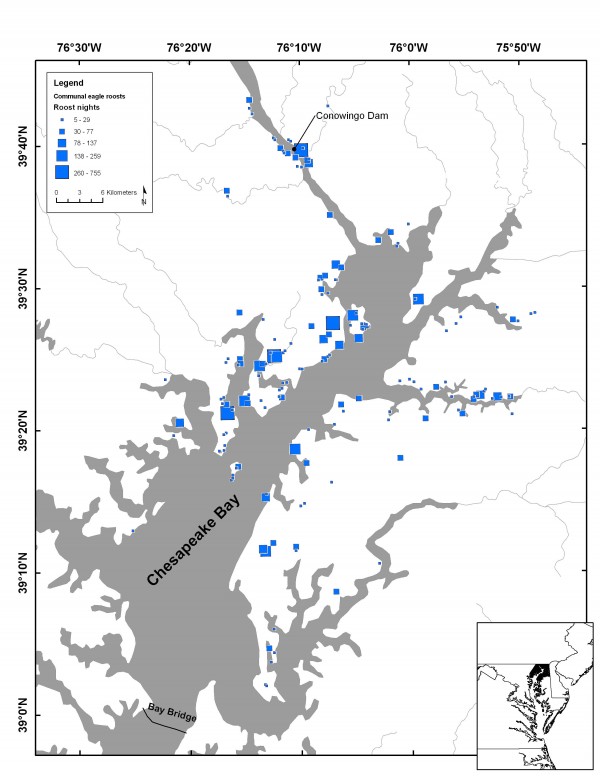Exploring eagle roost networks
Wind and waterbirds
March 1, 2010Azalea Still Close By March 3
March 3, 2010
Written by Bryan Watts
March 2, 2010

An adult male bald eagle named Nanjemoy, a local bird named for Maryland’s Nanjemoy Natural Resource Managment Area, flying above the reservoir and then catching a fish at Conowingo Dam. Photo by Ted Ellis.
Non-breeding bald eagles (sub-adults) are extremely social and frequently roost together near rich food resources. Communal roosts may be ephemeral congregations of birds that form to exploit short-lived food resources or may be used for decades. Roosts may be used by hundreds of birds or just 2 or 3 depending on the circumstances and the surrounding landscape structure. Because communal roosts play an important role in the life cycle of bald eagles they are protected under the disturb and sheltering provisions of the federal Bald and Golden Eagle Protection Act (Eagle Act) of 1940 and their management is considered within the National Bald Eagle Management Guidelines. Despite similar protections afforded under the Act for roosts and nests, most management programs have focused primarily on nesting sites. Throughout most of their range we have comparatively little systematic information on the abundance and distribution of bald eagle roosts.

Libby Mojica and Bryan Watts custom-fit a harness to attach a solar-powered satellite transmitter to an adult bald eagle. Photo by the Center for Conservation Biology.
The large bald eagle tracking project initiated in 2007 by CCB and partners is maturing into one of the most significant movement databases ever assembled for the species. This database now includes more than 450,000 GPS locations for a large cohort of birds. This information is being used to explore a long list of ecological questions that are relevant to species management. One series of questions involves roost networks and how they are utilized. The satellite transmitters deployed in this study were programmed to record a location at mid night. The dataset now includes more than 40,000 roost locations for 65 individuals.
Signs of communal roosts – Whitewash, pellets, and molted feathers are some of the best ground indicators of communal roosts. Large roosts may cover several acres. Photo by Libby Mojica.[/caption]Identification and delineation of communal roosts is a first step toward protection. Understanding patterns of use is essential to developing a policy framework that governs day to day management decisions. Such a management framework has yet to be developed. A recent analysis of roost data resulted in the delineation of 170 communal roosts within the upper Chesapeake Bay. This area supports a large number of resident breeding and subadult eagles, as well as, large numbers of northern and southern migrants from distant populations. This effort has resulted in the most comprehensive information on an interrelated network of roosts ever compiled. Analytical work is continuing with a focus on understanding how transmitters may be used to reveal roost networks and how movement patterns relate to elements of the network.

Map of communal roosts delineated with satellite data within the upper Chesapeake Bay Bald Eagle Concentration Area. Variation in symbol size reflects a range of relative use. Photo by the Center for Conservation Biology.
Project sponsored by the Center for Conservation Biology (CCB), U.S. Army, U.S. Fish & Wildlife Service (FWS), and EA Engineering.



